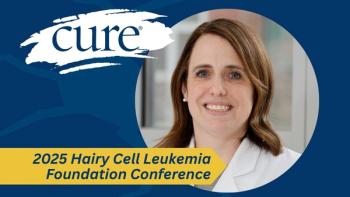
When does cancer survivorship begin?
In 1986 a group of cancer survivors gathered in Albuquerque, New Mexico, to create the National Coalition for Cancer Survivorship (NCCS). Those taking part knew, as we all do now, that it's not over when it's over -- cancer that is. That October day was probably the official beginning of the cancer survivorship movement. Today the NCCS is the premiere survivorship organization in the country. It represents all survivors in a number of capacities from its office in Washington, D.C., and has been responsible for some amazing advances in cancer survivorship and how we are perceived. One of the first things NCCS did was look at terminology. There is power attached to the words we use to describe ourselves, and, up until NCCS decided to make a change, we were mostly called cancer victims. It's a term I hate because a victim is someone who has no power or voice. That never felt like me. So NCCS formalized the term "cancer survivor," which they defined as the person diagnosed with cancer from the day of diagnosis and for the rest of his or her life. But the definition has had its ups and downs, mostly because identifying someone as a survivor from the day of diagnosis doesn't divide the experience into during treatment and after treatment, which is a huge milestone. For example, in CURE we define survivorship as when treatment ends and for the rest of your life. Then, last week, I had a discussion with Julia Rowland, PhD, the Director of the Office of Cancer Survivorship at NCI (a position brought about, in part, by NCCS lobbying). Julia was the keynote at the National Conference on Cancer Nursing Research in Los Angeles and much of the research being presented by nurse researchers looked at long-term and late effects.Julia and I were discussing late effects of treatment, and she said that understanding the long term impact that drugs and radiation can have on our bodies should be something taken into consideration in the treatment decision. As an example, she told me about a dynamic business woman she knew who had been diagnosed with cancer. The woman also happened to be blind. In discussing the treatment plan with her oncologist she asked about side effects and he casually said that one of the drugs could cause neuropathy, loss of sensation in the finger tips and toes. She stopped him right then, pointing out that her fingers were her eyes. Together they changed the regimen to one that would not cause neuropathy. Obviously, if there is one drug that is the difference between life and death, it would be used. But if the drugs are being given in the adjuvant setting, the risk versus benefit must be explored if the long-term or late effects would impact the quality of life or the ability to perform in a career. It's the same discussion many are having as more is known about chemobrain, the cognitive dysfunction that can accompany some drugs. If the use of the drug lessens the risk of recurrence by 5 percent it needs to be weighed against the chances that the accompanying cognitive dysfunction could end a career when sharp recall and multitasking are required. Unfortunately we still have a long way to go before the cancer community will adopt such thinking. The focus remains on life at all costs as the only acceptable goal. But a discussion I had with Julia Rowland, PhD, last week helped me see how we will one day be survivors from the day of diagnosis because of the understanding of long term and late effects and how those must be taken into consideration at diagnosis.





